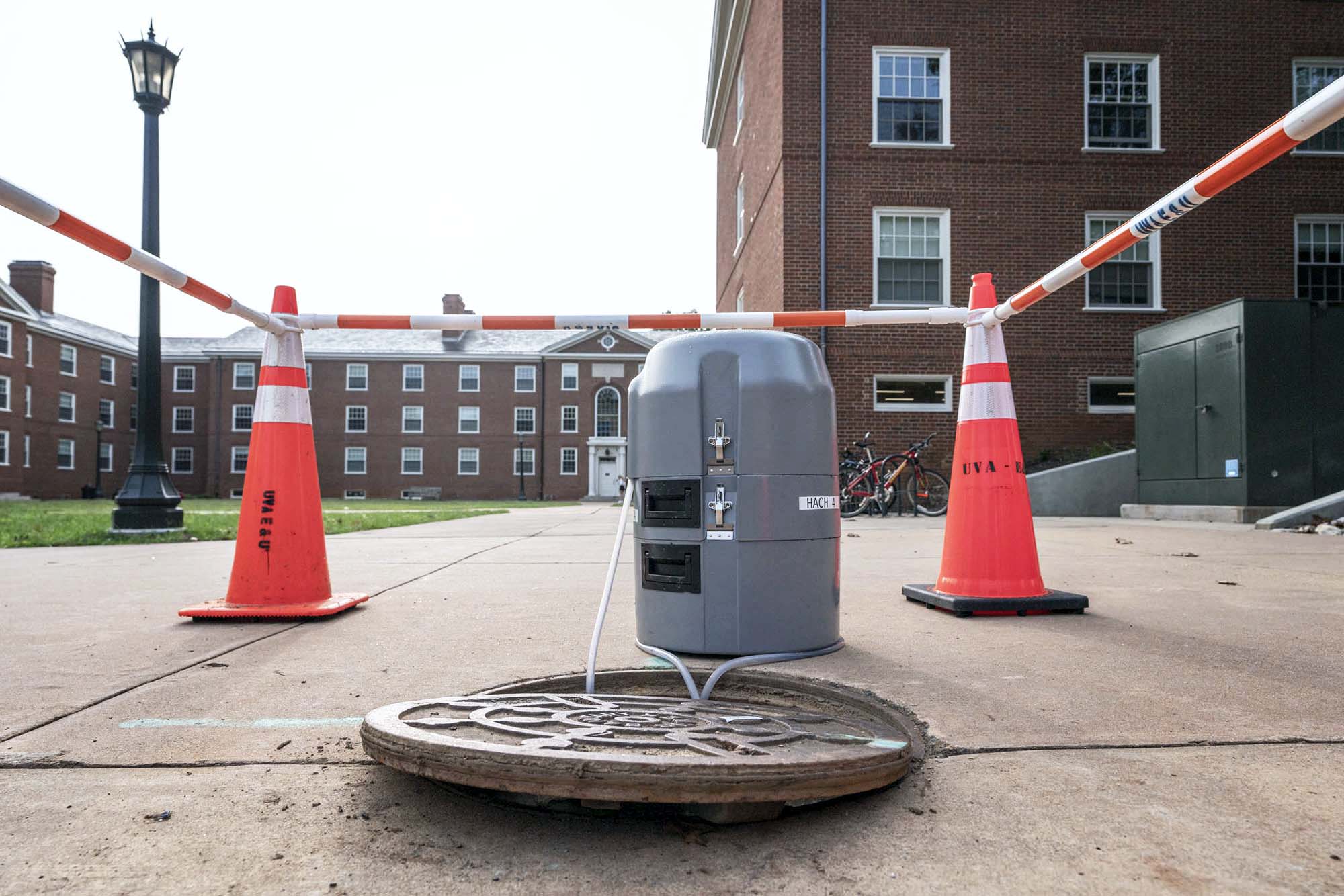On the surface, looking for evidence of COVID-19 in wastewater – the runoff from sinks and showers and toilets – seems simple: Open up a manhole cover, scoop out some of the sewage, and examine the sample for germs.
“The method isn’t stylish,” said Dr. Amy Mathers, an infectious disease physician at UVA Health and associate director of clinical microbiology for the University of Virginia’s School of Medicine.
The question of scientific elegance aside, the reality of the testing program Mathers and Lisa Colosi-Peterson, an associate professor in UVA’s Department of Engineering Systems and Environment, are leading to examine the wastewater at UVA’s dormitories is more complex and took time to design.
And the testing program’s stakes are high, because it is a lynchpin in UVA’s protocols for stopping the spread of the virus and allowing students to remain on Grounds.
“What we’re looking for isn’t the virus itself, but specific RNA remnants of the virus,” said Mathers, who has also been on the front lines of the pandemic at UVA Health, including helping design a COVID-19 test and supply the tests to the Commonwealth of Virginia. “And it turns out that this method is very accurate for finding out if the people living in the building and using the wastewater system have COVID.”
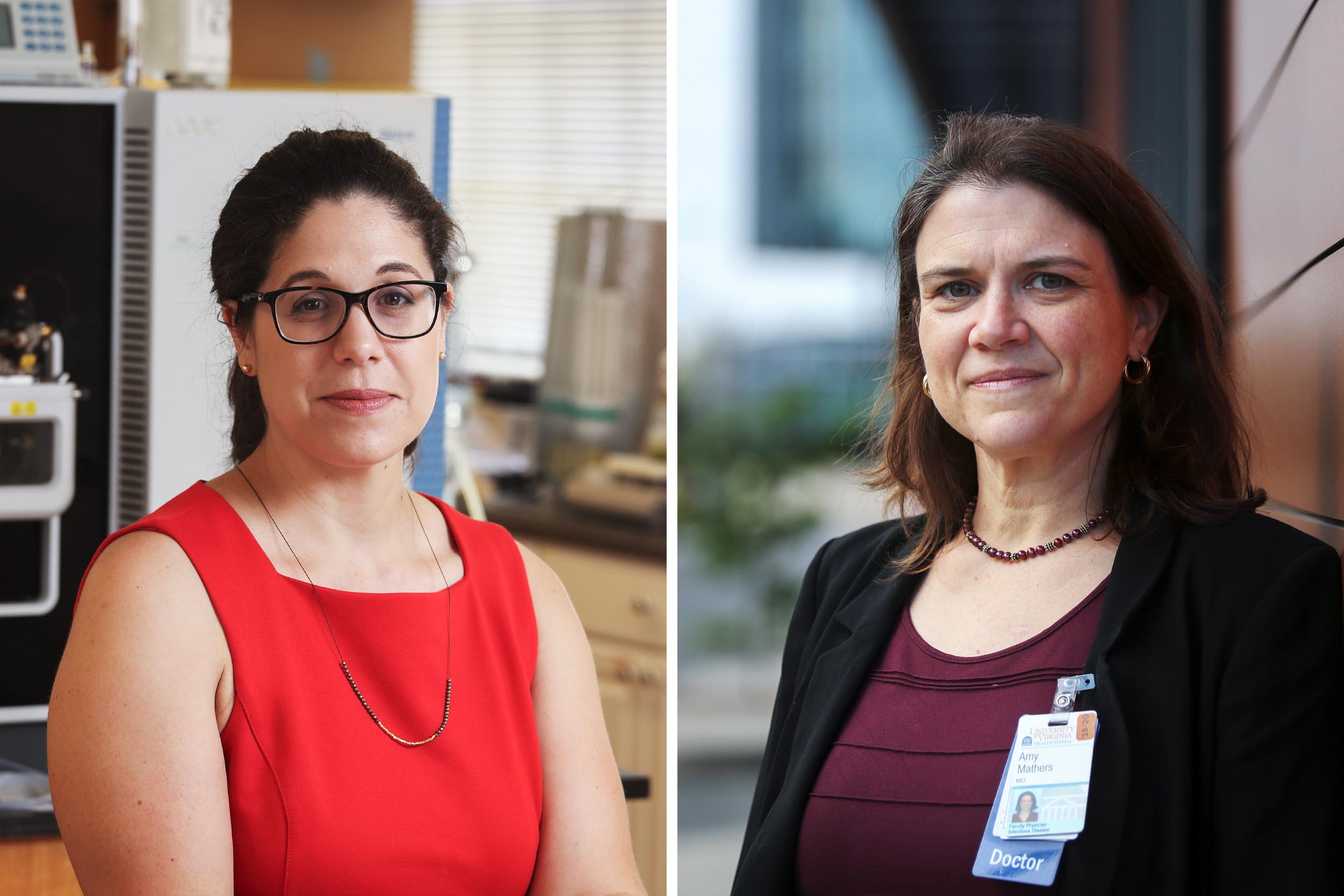
Lisa Colosi-Peterson, left, an associate professor of engineering systems and environment, and Dr. Amy Mathers, an infectious disease physician, are leading the testing program. (Photos by Tom Cogill, UVA Engineering and Justin Ide, Reuters)
Mathers’ and Colosi-Peterson’s program launched Sept. 8, as the undergraduate student population returned to UVA’s Grounds.
“Our aim is to reduce the number of occurrences by using our wastewater monitoring results to detect COVID, then identify individuals through further testing and isolate them before they pass on the virus,” Colosi-Peterson said. “Other researchers have tested for COVID at wastewater treatment plants and then used computer modeling to try to build a big-picture idea of what happened in their community after the fact. Getting building-level data in real time is brand new. We are attempting to reduce outbreaks and target them while they are happening.”
The method is used in part as an early warning system that, in concert with other measures at UVA, is designed to check the spread of COVID-19 in the community. Mathers’ and Colosi-Peterson’s method also is being used to decrease the number of individual tests needed to detect the virus.
“With this technique, we administer swab tests if we see a spike in the wastewater results of a particular building, instead of testing all the people in every building, one by one,” Colosi-Peterson said.
“This is what made me want to do the wastewater project, knowing that it could be such a useful tool as an early warning system to monitor high-risk populations who live together, for the University and others,” Mathers added.
When researchers found evidence of the virus in the wastewater of some dormitories recently, the University decided to have all the people in those buildings tested. Students confirmed positive for COVID-19 were isolated and quarantined before the virus became more widespread.
“This is exactly the impact we were hoping for when we started our project,” Mathers said.
The Stage Was Set
Mathers and Colosi-Peterson attribute their success, and the ability to make progress so quickly, to the fact that they already had a strong working relationship. They had been working together on a project supported by the UVA Center for Engineering in Medicine, which leads engineering-medicine collaboration.
When the pandemic hit, Mathers and Colosi-Peterson were working a project, supported by a seed grant from the center, about tracking antibiotic-resistant bacteria in wastewater. They were able to shift quickly to the COVID-19 detection project by using some of the testing methodologies they had already developed.
Before they began, Mathers and Colosi-Peterson had heard about wastewater testing for COVID-19 in their respective fields, but both were skeptical.
“Knowing that this is our specialization, friends and colleagues kept asking me if ‘someone’ was testing COVID in wastewater, and the same with Amy. We realized that those people wanted us to be that ‘someone,’” Colosi-Peterson said. “But because we’re in a pandemic, we have to make sure everything we do has maximum impact.”
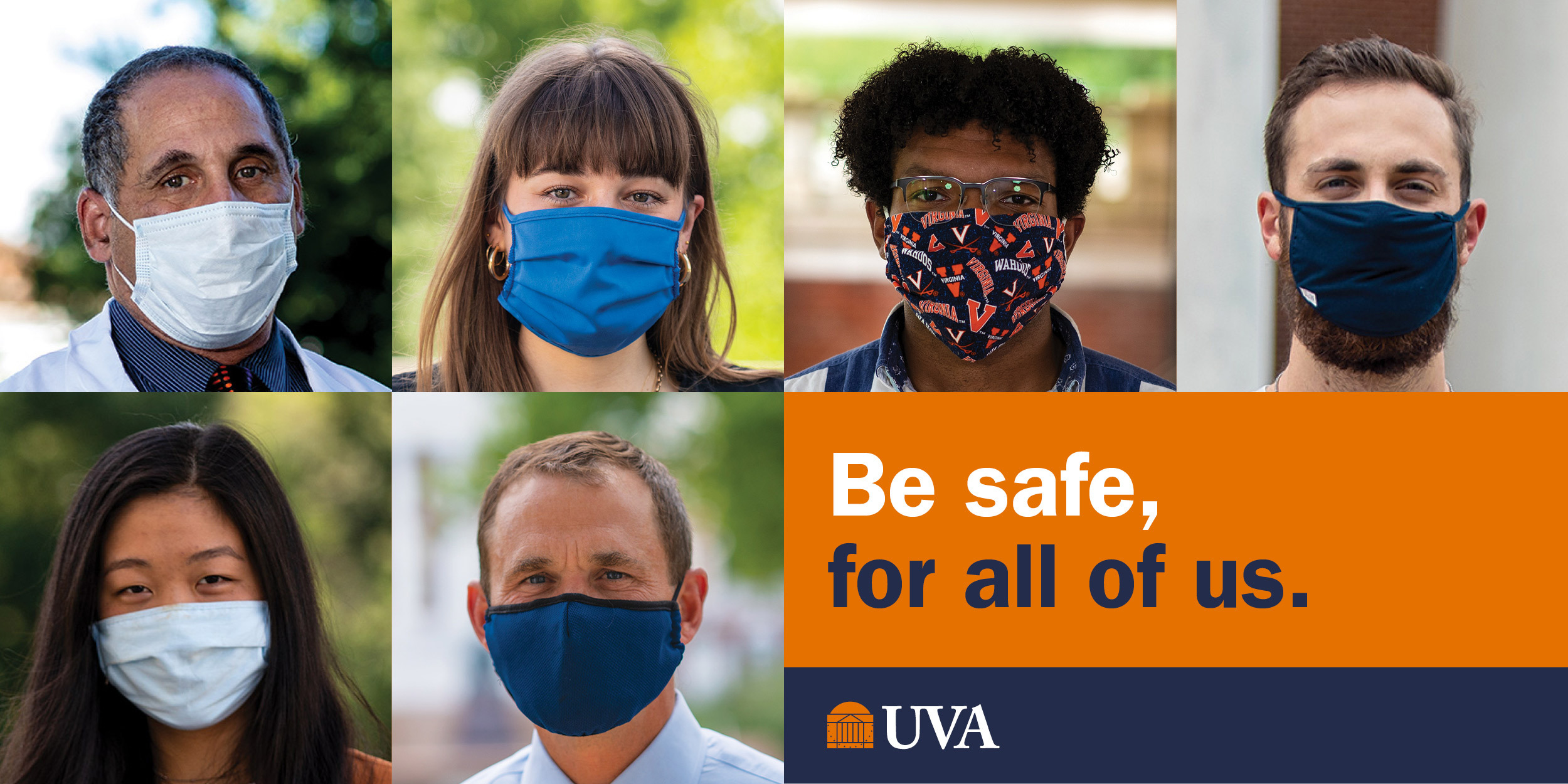
Both scientists kept the idea on their radar, but the turning point came when one of Colosi-Peterson’s colleagues presented some data from a Yale study at her departmental faculty meeting.
“I nearly jumped out of my chair,” Colosi-Peterson said. “The study documented a COVID-19 RNA count from a wastewater facility that had been correlated to a specific number of COVID patients. The study showed that we could reasonably predict what the patient caseload would be seven days later if we knew the number of viral RNA copies in the wastewater. We never get this kind of correlation!”
After learning it was possible to anticipate COVID cases in advance based on community-level monitoring at municipal wastewater treatment facilities, Mathers and Colosi-Peterson were eager to explore whether this approach could be applied as part of the University’s larger plans to reopen safely.
Summer Pilot
First, they wanted to pilot their testing protocols. It was Mathers’ idea to use UVA Health’s new hospital tower, dedicated to COVID-19 patients, and dorms as high-population-density test facilities.
“We got lucky,” Mathers said. “The first place where we tried to test our methods and validate our data was a new hospital tower that had just been commissioned. It had only one wastewater pipe leaving the building, and the only patients were COVID-19 patients. So, this was a closed system – something that almost never happens – that made it a lot easier to see if our wastewater test results were accurate.
“With permission, we compared our wastewater results with the hospital COVID-19 swab-test results, and found that we had a way that worked.”
The pair said they started by just trying to validate a variety of different methods. Colosi-Peterson’s team tried multiple ways of collecting the wastewater, and Mathers’ team evaluated ways of molecularly enriching the samples to find and measure the RNA signatures. Colosi-Peterson and Mathers worked together until they got a winning combination.
“Then we got approval to start testing wastewater at the dorms,” Mathers said. “This was a population we felt driven to gain insight on. When people live together, they cannot wear a mask around the clock, and that’s when COVID gets transmitted.
“We initially took samples at the manholes in the back of all the buildings at Faulkner complex and Copeley Hill student housing, and we got an understanding of COVID positivity and negativity in groups of students.”
Colosi-Peterson said, “The sampling got underway ‘for real’ during move-in. After a summer of piloting, we were prepared to implement our testing method in the wastewater pipes in selected dorms.”
Technology and Teamwork
To provide water sampling at the scale needed for a university, the team depends on autosampler robots and other UVA personnel.
Autosamplers, about the size of a small trash can, sit inside a manhole and are programmed to take wastewater samples periodically. Autosampler robots are common in the environmental sciences for collecting stormwater, and Colosi-Peterson and her team repurposed them for the COVID-19 detection project.
“Right now they are programmed to take 30 milliliters every 15 minutes,” Colosi-Peterson said. “Wastewater is only in the pipes transiently, so we have to make sure we capture the specimens. And unlike bacteria, COVID doesn’t have a long dwell time.”
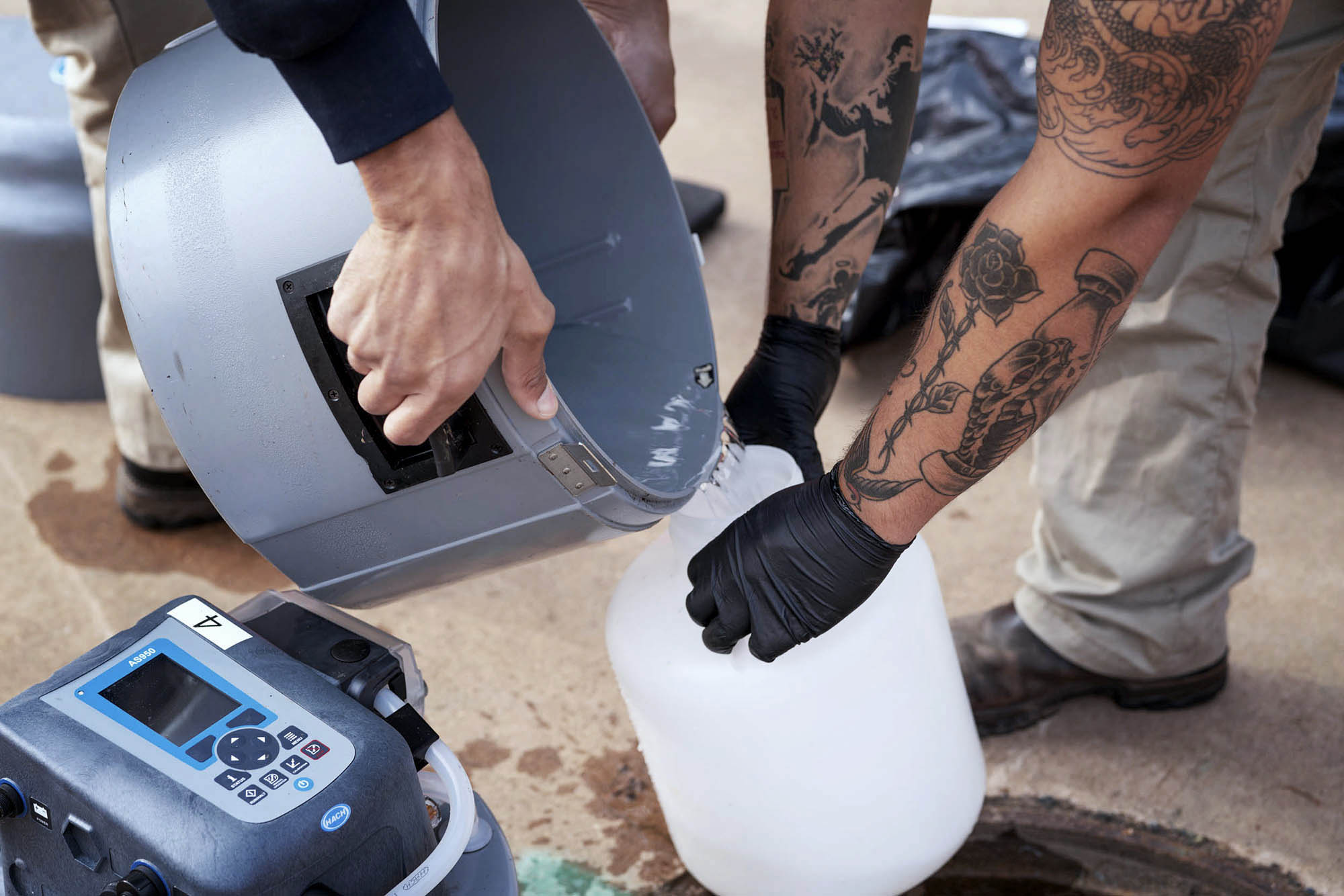
To provide water sampling at the scale needed for a university, the team depends on autosampler robots and other UVA personnel. (Photo by Sanjay Suchak, University Communications)
“I think this is one of the most critical pieces of information we discovered about tracking COVID in this way,” Mathers said. “There are no human cells in the wastewater that the virus can use for replication. That’s a good thing, in that the virus isn’t growing or contagious, but it also makes it a bit of a logistics challenge to gather the samples at a fast enough rate.”
The team designed a rotation plan to cover the wide array of student residence buildings using 15 autosamplers, some of them built by UVA Facilities Management. This provided the best coverage and did not strain the autosamplers.
Both scientists commended UVA Facilities Management for their help in rotating the autosamplers and managing the manholes.
Paul Zmick, director of the UVA Department of Energy and Utilities, and Cameron Ratcliff, utility systems distribution manager of the same department, along with Shireen Kotay, a research associate under Mathers, joined together to make this project happen in the field.
“If Facilities had not been so supportive and enthusiastic, we could not have done this,” Colosi-Peterson said. “Paul didn’t even blink when I cold-called him to ask for his help accessing UVA sewage.
“In the early days, we relied on them to help us find the right manholes, open the manholes and safely collect samples. Now they have a team that maintains and moves the autosamplers around. They have effectively taken over responsibility for the logistics of sample collection together with Shireen.”
Next Steps
“As an early-detection system in a population that doesn’t have the virus yet, it’s a good solution as-is,” Mathers said. “Besides the way we are using it at the University, the application that comes to mind immediately is nursing homes, because it is a vulnerable population with potential for bad outcomes, and it’s high risk for transmission because everyone lives together. I wish we had this detection method at the start of COVID.”
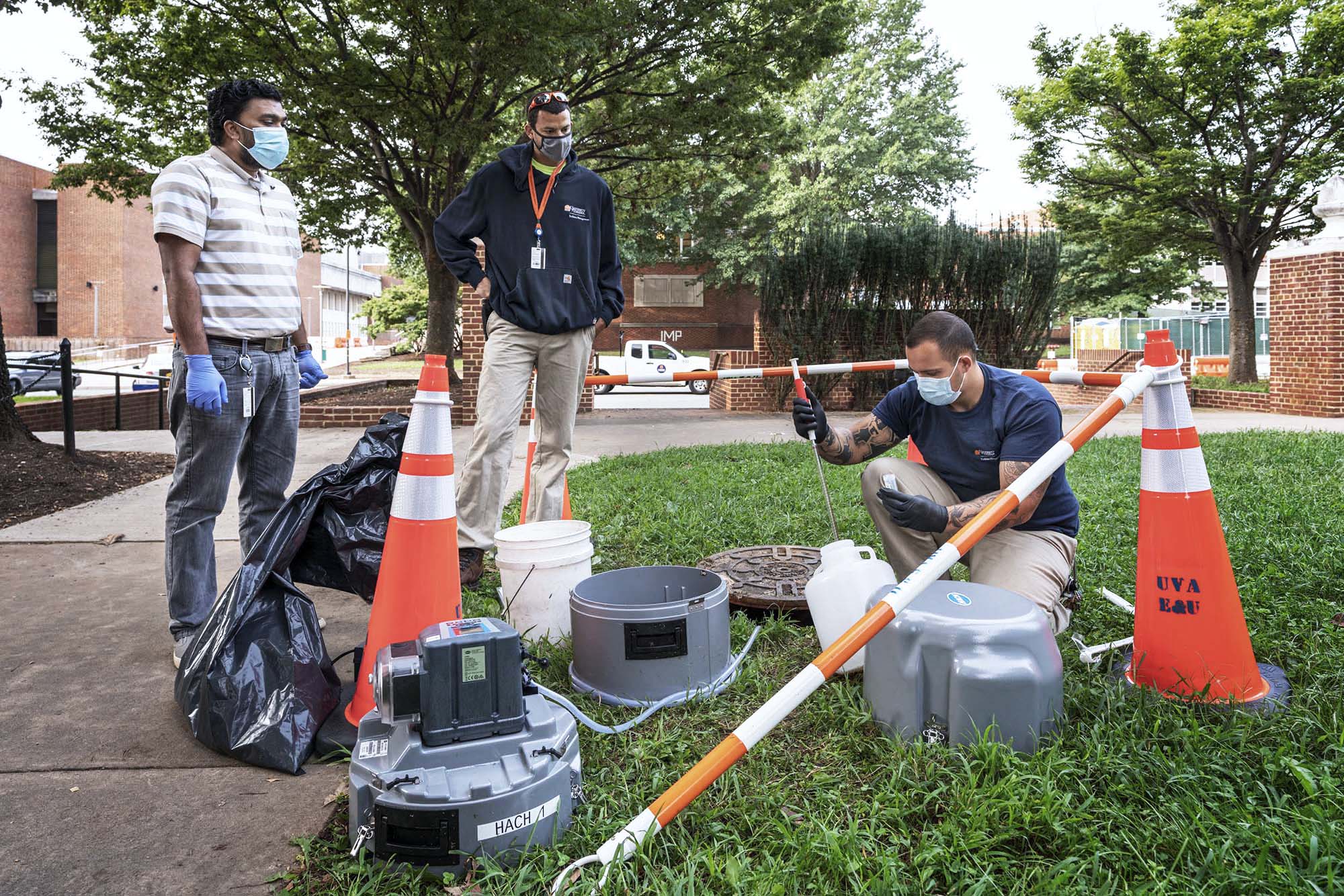
Both Mathers and Colosi-Peterson commended UVA Facilities Management for their help in rotating the autosamplers and managing the manholes. (Photo by Sanjay Suchak, University Communications)
Colosi-Peterson said, “This is a very proactive approach. With just a little forewarning provided by the wastewater tests, we might be able to avert an outbreak or stop one from returning.
“But we still have a little way to go for populations that are saturated with COVID. We don’t have a way to distinguish new cases from people who have already had the virus, have recovered and are no longer contagious but are still testing as positive. Viral RNA particles are shed from humans for weeks after infection. Our next step is to get even more detailed results and find a way to separate the different test-positive populations.”
For the immediate future, the Mathers-Colosi-Peterson team is working on a proposal to the National Institutes of Health to try to get funding to refine their method even further. They think their solution could eventually turn into a utility service for use in high-density population areas like schools, nursing homes and apartment buildings. The U.S. Department of Defense is also interested in this type of research to monitor ships and bases.
Media Contact
Article Information
October 9, 2020
/content/inside-science-testing-wastewater-uva-evidence-covid-19

